In this guide
A step-by-step guide to fast feature prioritization
A step-by-step guide to fast feature prioritization

Ready to take the guesswork out of your product roadmap?
Feature prioritization helps teams make smarter, data-driven decisions about what to build next. Instead of relying on gut instinct, internal opinions, or loudest requests, prioritization grounded in customer insight ensures you're delivering features that matter to your customers and your business.
So, what can you prioritize? Just about everything. From new product features, CX enhancements, and onboarding flows to payment options, integrations, or even behind-the-scenes improvements. Whether you’re choosing between small optimizations or major initiatives, a thoughtful prioritization process helps you focus on what will have the biggest impact.
In this guide, we’ll walk through how to gather customer insights, evaluate ideas, and build a confident, scalable prioritization process—so you can deliver better experiences, faster. Let’s get started!
Why feature prioritization matters
Feature prioritization is essential to building products that create real value for customers and drive business outcomes. Without a clear strategy, teams risk investing in features that don’t resonate with customers, fail to stand out in the market, or introduce unnecessary complexity.
By defining clear priorities, teams can focus on high-impact initiatives that improve usability, enhance engagement, and support strategic goals. Prioritization also helps teams move faster by making smarter trade-offs, optimizing resources, and reducing complexity. It’s not just about what gets built—it’s about ensuring every feature has a purpose and delivers value.
Key reasons to focus on feature prioritization
- Maximize customer value and adoption: Prioritize features that solve key customer problems, improve the experience, and keep your product relevant in a competitive market.
- Drive business impact: Focus on features that contribute to revenue growth, customer retention, or operational efficiency, aligning with strategic business goals.
- Strengthen product differentiation: Invest in features that set you apart, reinforce your brand promise, and seize unique opportunities in the market.
- Optimize development effort and resources: Balance complexity and capacity by prioritizing quick wins, scalable improvements, and features with the highest ROI.
- Reduce risk and validate early: Leverage customer feedback and iterative testing to de-risk decisions, validate assumptions, and ensure strong product-market fit.
Common challenges teams face
Feature prioritization is inherently difficult because it requires balancing many competing factors—customer needs, business goals, technical feasibility, and internal priorities. Teams are constantly navigating trade-offs, shifting market demands, and the pressure to move fast, all while trying to make the best possible decisions with incomplete information.
Key challenges include:
- Getting the right type of feedback: Teams often struggle to collect insights that are deep, diverse, and representative. Inputs may come from:
- Customer surveys that lack depth
- Support tickets and feedback channels that reflect only vocal customers
- Focus groups prone to biased group dynamics
- Analytics that show what customers do, but not why
- Sales or CS input that may skew toward high-value accounts
- Resource constraints: Time, budget, and staffing limitations can make it difficult to do thorough research or strategic planning, especially at scale.
- Shifting market conditions: Rapidly changing customer expectations and industry trends make it challenging to set and stick to a long-term plan.
- Misalignment across stakeholders: Different teams often have their own priorities, creating friction or slowing down alignment.
- Fear of getting it wrong: Uncertainty around potential impact can lead to overthinking and delays, especially when the stakes feel high.
What happens without this approach?
Without a structured prioritization process, teams often fall into reactive decision-making—building based on instinct, the loudest request, or the latest competitor move. While this might feel fast, it’s rarely effective.
Common pitfalls of skipping prioritization:
- Gut-driven decisions: Relying on intuition or leadership preferences over data and customer feedback.
- Saying yes to everything: Trying to fulfill every request from customers, sales, or execs, leading to a bloated product.
- First-come, first-served: Prioritizing based on who asked first, not what matters most.
- Sales-driven roadmaps: Letting revenue potential drive every decision, even if the feature doesn’t fit the long-term vision.
- Copying competitors: Reactively building what others have without validating whether it meets your customers’ needs.
- Tech-first development: Prioritizing what’s easy or exciting to build, rather than what customers actually want.
- No process at all: Making ad hoc decisions that lack strategic cohesion or measurable outcomes.
The impact of not prioritizing features
When teams skip a structured prioritization process, the consequences add up quickly. Without a clear focus, it’s easy to waste valuable time and resources on the wrong things—features that don’t solve real problems, don’t differentiate your product, or don’t move the business forward. Over time, the product becomes harder to manage, less relevant to customers, and misaligned with strategic goals.
What’s at stake:
- Wasted resources: Development time, budget, and team energy are spent on features that don’t deliver meaningful value.
- Slower product development: Lack of clarity creates inefficiencies, bottlenecks, and delays.
- Low customer adoption: Features miss the mark for your audience, leading to frustration or indifference.
- Increased complexity and technical debt: Unfocused development creates bloated products that are harder to scale and maintain.
- Missed market opportunities: Slow or misaligned decisions can cause you to fall behind in fast-moving markets.
- Lost revenue and growth: When features don’t support business goals, the entire product suffers from conversion to retention.
Feature prioritization isn’t just a nice-to-have—it’s a critical discipline that helps teams stay focused, build smarter, and deliver real impact.
Solution
Top organizations are incorporating real customer insight into every stage of their feature prioritization process—ensuring that what gets built truly matters to their customers and supports business goals. Instead of relying on assumptions or internal opinions, they use direct feedback to identify unmet needs, validate ideas, and confidently focus on the features that will have the greatest impact.
Here’s how you can apply the same approach:
Step 1: Define prioritization goals and key questions
Before evaluating potential features, establish clear goals and decision-making criteria.
- Identify your product or business objective: Are you aiming to improve adoption, boost engagement, or streamline operations?
- Determine what you want to learn: Are you validating assumptions, exploring unmet needs, or identifying pain points?
- Set evaluation criteria: Define how you’ll measure impact, feasibility, effort, and confidence.
Step 2: Identify and list potential features
Brainstorm and compile a list of feature ideas from cross-functional inputs.
- Include ideas from customer feedback, support tickets, and analytics.
- Collaborate with product, design, engineering, and marketing teams.
- Look for both incremental improvements and bold innovations.
How UserTesting helps
Connect with the right audience quickly
With UserTesting, finding the right audience is simple. Choose from a diverse network of participants, target your own customers and prospects, or use custom recruiting for niche needs—all designed to deliver quality insights fast.
Discover new opportunities
UserTesting supports early-stage discovery by helping teams explore unmet needs, pain points, and desires directly from customers, leading to stronger ideas and better-informed feature lists.
Key features
- UserTesting Network
- Filters: Use advanced filters to pinpoint specific audience demographics, behaviors, or job roles.
- Custom screener questions: Ensure participants meet your unique criteria before participating in the test.
- Invite Network and 30+ Partner Networks
- AI-powered test distribution
- Discovery templates
Step 3: Gather and evaluate customer feedback on feature ideas
Validate which features matter most to your customers and why
- Use interviews, unmoderated tests, or surveys to capture feedback on proposed features
- Have participants react to concepts, prioritize ideas, and describe what's missing
- Explore pain points, expectations, and desired outcomes in context
Evaluate feedback to guide decisions
- Identify recurring themes and unmet needs across participants
- Differentiate high-confidence insights from outliers or one-off suggestions
How UserTesting helps
Capture a vivid, first-person understanding at scale
The UserTesting solution makes it easy to get rich feedback from your target audience. Choose the approach that fits your needs:
- Live Conversations: Speak with participants in real-time, ask follow-up questions, and explore their response to creatives in depth.
- Self-guided tests: Participants complete tasks independently, offering honest, candid feedback as they react to your creatives.
- Surveys: Capture broad sentiment and customer preferences quickly by gathering quantitative insights alongside qualitative feedback.
Speedy test deployment
Quickly set up tests with user-friendly templates and automated targeting, saving significant time and effort.
Key features
- Live Conversations
- Talk out loud studies
- Video recording
- Survey and rating questions
- Task-based testing
Step 4: Evaluate and synthesize customer feedback
Once feedback is collected, analyze and interpret results to guide prioritization.
- Identify recurring themes and unmet needs across participants
- Cluster related insights and separate strong patterns from edge cases
- Use videos, clips and survey data to inform confidence levels in potential features
How UserTesting helps
Unlock insights faster
Spend less time watching videos and let AI point you to key trends and themes with analysis solutions, including the AI Insight Summary, automated transcripts, sentiment analysis, interactive path flow, intent paths, friction detection, keyword mapping, and more.
Key features
AI Analysis solutions:
- AI Insight Summary: Automatically identifies trends and summarizes key takeaways from customer sessions.
- Sentiment analysis: Detects positive, neutral, and negative feedback across participant responses.
- Keyword mapping: Visualize the most frequently mentioned terms to spot common themes and concerns.
Step 5: Score and rank features using prioritization frameworks
Use structured methods to evaluate and compare feature ideas
- Apply frameworks like RICE, ICE, or Value vs. Effort matrices
- Use customer insights from Steps 3 and 4 to inform "Reach," "Impact," and "Confidence" scores
- Highlight high-impact, low-effort opportunities backed by real customer feedback
- Involve cross-functional stakeholders in the scoring process
How UserTesting helps
Make prioritization data-driven: Rather than relying on gut instinct, use validated customer feedback to power your scoring models and bring clarity to decision-making. Quickly transcribe, clip, edit, tag, and share key moments from customer videos, allowing your team to focus on what matters most. Quickly build and share highlight reels to align faster and make confident, customer-driven decisions.
Key features
- Highlight Reels, clips, and tags
Step 6: Align with stakeholders and gain buy-in
Present findings and secure agreement across teams
- Share key insights and customer quotes to support prioritization choices
- Facilitate discussions between product, design, engineering, and leadership
- Resolve conflicting priorities with data-driven narratives
How UserTesting helps
Establish a shared understanding of your customers: UserTesting’s Insights Hub is your central resource for storing, discovering, and collaborating on customer insights—all in one place.
- Unify experience data: Keep research findings and customer insights accessible across teams.
- Align strategies: Ensure all teams have visibility into the latest customer learnings.
- Seamlessly integrate: Connect insights with external tools so teams can act on them within their existing workflows.
Key features
- Insights Hub
- Insights Discovery
- Insights Reports
Step 7: Refine the roadmap and plan releases
Integrate prioritized features into your product roadmap
- Balance near-term wins with long-term vision
- Sequence features based on dependencies, seasonal timing, or strategic initiatives
- Adjust plans as needed based on new insights or shifting priorities
Step 8: Benchmark, monitor, and iterate to improve feature impact
Feature prioritization isn’t a one-and-done process—it’s a continuous cycle. To build features that truly deliver value, benchmark early, monitor performance post-launch, and refine based on feedback.
- Benchmark before development: Use prototypes or concepts to test usability, clarity, and appeal early, before committing resources
- Monitor after release: Measure adoption, satisfaction, and performance in the live environment
- Iterate based on real feedback: Revisit and refine features based on customer insights, business outcomes, and evolving needs.
How UserTesting helps
Ensure designs meet customer needs: UserTesting’s QXscore™ provides a clear, measurable quality benchmark to ensure prototypes align with customer expectations before advancing to development. By evaluating key aspects of the customer experience—such as ease of use and overall satisfaction—QXscore empowers teams to determine whether their designs are ready to move forward.
Benchmark and improve your CX to stay ahead: UserTesting’s QXscore helps you benchmark new features against competitors and track progress over time. It reveals where you excel, where to improve, and how updates impact usability and satisfaction—so you can stay competitive and continuously evolve with customer expectations.
Key features
- QXscore
Customer success stories
Atom bank boosts customer growth 96%
By using UserTesting to prioritize features based on customer insights, Atom bank improved its digital banking experience, leading to a 96% increase in customer growth and a 4.8-star app rating.
Zenni Optical increases conversions by 7.25%
Zenni Optical prioritized a guest checkout feature based on customer feedback, resulting in a 7.25% increase in conversion rates, a 22.9% drop in exit rates, and a 900% rise in sales from guest checkouts.
Canva scales to millions of global customers
By using UserTesting to prioritize onboarding improvements, Canva enhanced ease of use and customer confidence, helping them scale to millions of customers globally while maintaining a seamless design experience.
Cedar creates customer-driven product roadmap
Cedar used customer insights to shape a product roadmap that improved healthcare affordability, payment options, and communication, ensuring their solutions met patient and provider needs.

Get actionable insights today
Uncover human insights that make an impact. Book a meeting with our Sales team today to learn more.


